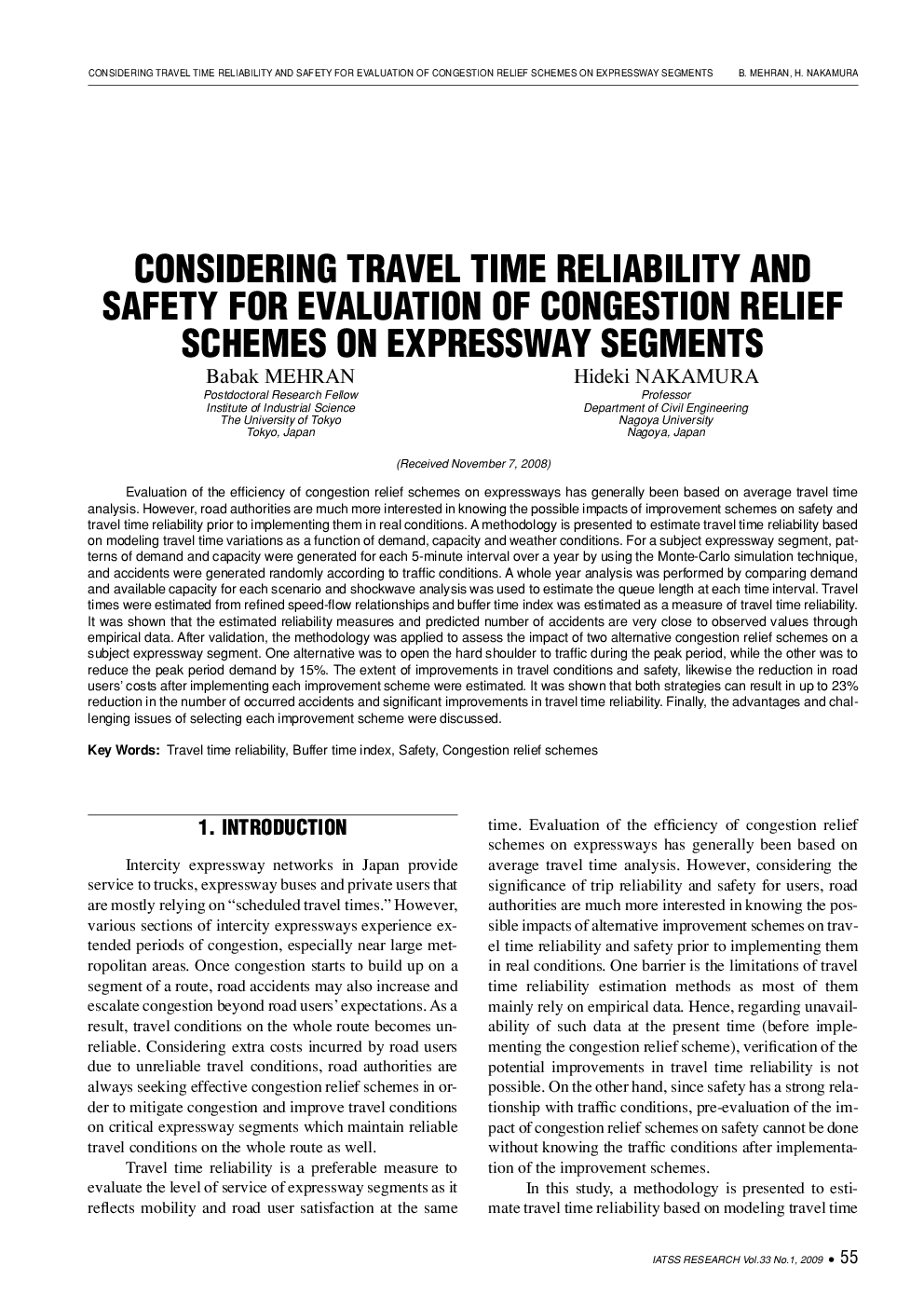| کد مقاله | کد نشریه | سال انتشار | مقاله انگلیسی | نسخه تمام متن |
|---|---|---|---|---|
| 1104749 | 954150 | 2009 | 16 صفحه PDF | دانلود رایگان |

Evaluation of the efficiency of congestion relief schemes on expressways has generally been based on average travel time analysis. However, road authorities are much more interested in knowing the possible impacts of improvement schemes on safety and travel time reliability prior to implementing them in real conditions. A methodology is presented to estimate travel time reliability based on modeling travel time variations as a function of demand, capacity and weather conditions. For a subject expressway segment, patterns of demand and capacity were generated for each 5-minute interval over a year by using the Monte-Carlo simulation technique, and accidents were generated randomly according to traffic conditions. A whole year analysis was performed by comparing demand and available capacity for each scenario and shockwave analysis was used to estimate the queue length at each time interval. Travel times were estimated from refined speed-flow relationships and buffer time index was estimated as a measure of travel time reliability. it was shown that the estimated reliability measures and predicted number of accidents are very close to observed values through empirical data. After validation, the methodology was applied to assess the impact of two alternative congestion relief schemes on a subject expressway segment. one alternative was to open the hard shoulder to traffic during the peak period, while the other was to reduce the peak period demand by 15%. The extent of improvements in travel conditions and safety, likewise the reduction in road users' costs after implementing each improvement scheme were estimated. it was shown that both strategies can result in up to 23% reduction in the number of occurred accidents and significant improvements in travel time reliability. Finally, the advantages and challenging issues of selecting each improvement scheme were discussed.
Journal: IATSS Research - Volume 33, Issue 1, 2009, Pages 55–70